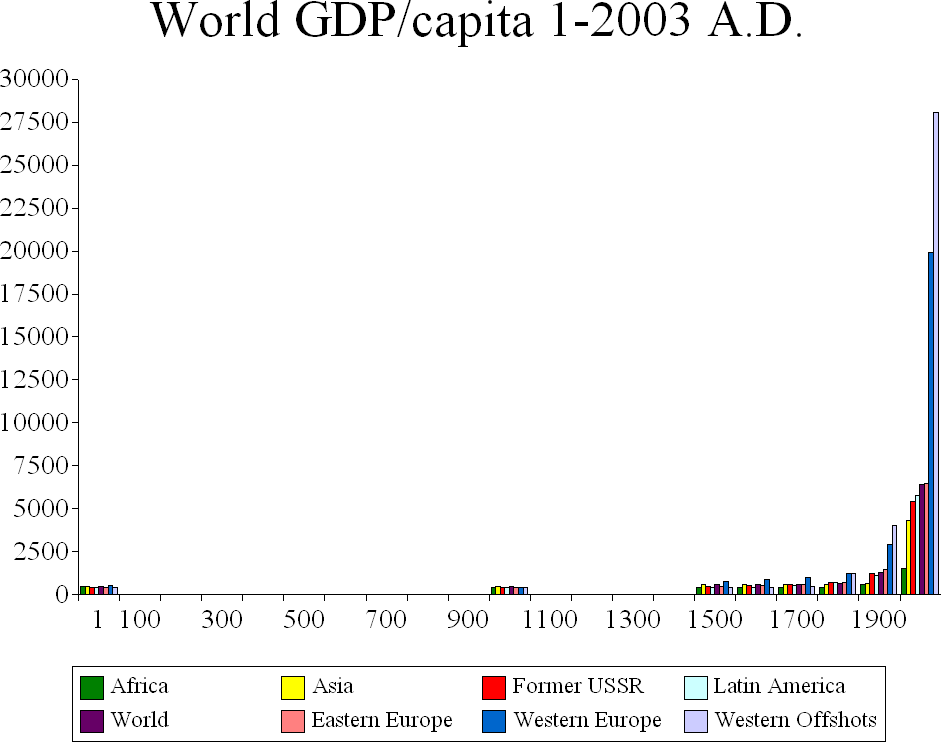Over the same periods real per share earnings grew 3.2%, 2.0% and 1.5% annually while the S&P500 increased by 5.1%, 2.7% and 1.9% per year above inflation. Very interesting to see how over the longest period (100 years) these measures grew at very similar paces.

Brad DeLong has an excellent little paper on economic growth here. It shows that the numbers above are just so much larger than before the industrial revolution.








